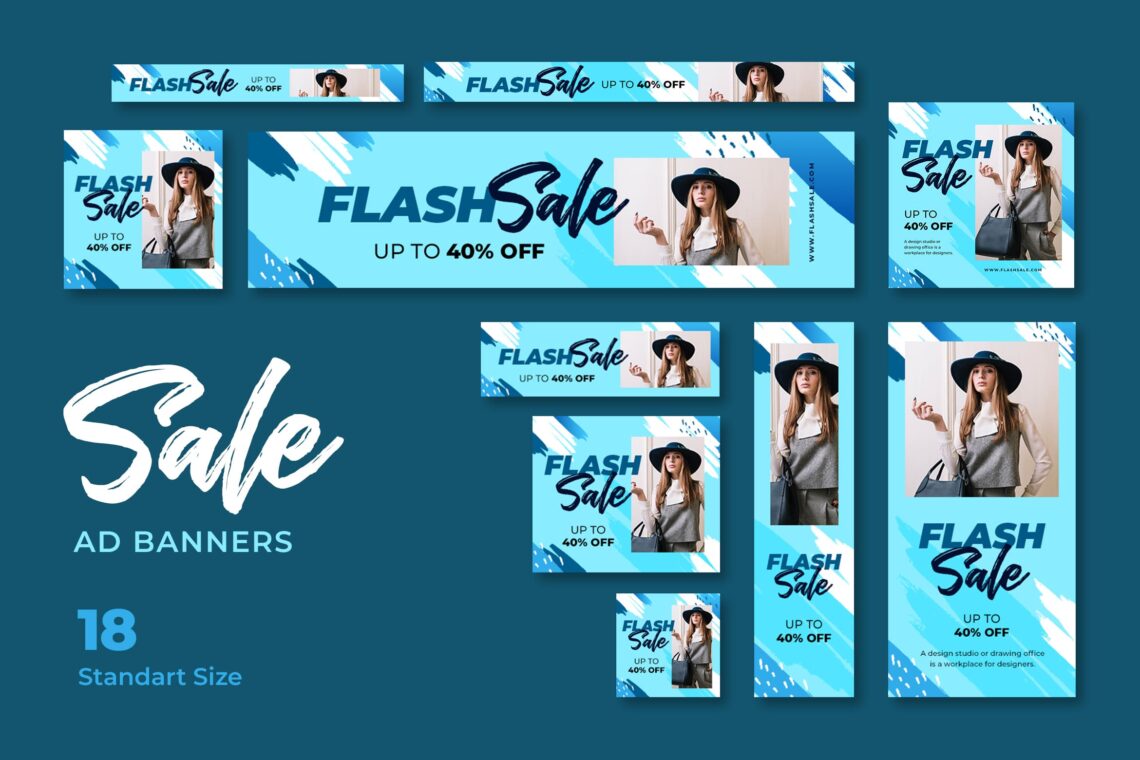
You’ve launched your business website with all the amazing products and services. It acts as a virtual storefront and a representation of your brand. Naturally, you hoped customers would flock to it right away and show interest in what you offer. But with all the efforts you’ve put into it, you’re still hearing crickets. It appears that only a few visitors are finding their way to your site. So, what could be the reasons? It might be your website design.
In a 2021 study, around 50% of consumers revealed that they assess a brand based on its website design. That means your website’s appearance can greatly influence customers’ impressions of your business.
Quick Overview of Website Design
Think of it this way: a store overflowing with stuff, shelves randomly stacked, and barely a path to navigate. How long would you stay? Perhaps not very long. Your website shouldn’t be that chaotic. A website design is like a well-organized store – inviting, user-friendly, and ultimately, achieves its purpose.
If you’re not sure where and how to start, you can always seek assistance from the Louisville web design experts or any reputable digital marketing agency near you.
But before searching for a trusted partner, let’s first dissect the anatomy of a successful website design, exploring the key elements that work together to create a winning digital presence.
-
Hooking them in the fold
They say you never get a second chance to make a first impression, and that applies to websites, too.
The ‘fold’ refers to the area users see without scrolling – prime real estate for grabbing attention and setting the tone. Here’s what you need to prioritize above the fold:
- Clear value proposition: In a blink, visitors should understand what your website offers and why they should care. Visualize it as your website’s elevator pitch – concise, impactful, and highlight the benefits you deliver. For example, if you’re a travel agency, your unique value proposition (UVP) would be:
‘Travel the world effortlessly. Discover unbeatable deals on flights, hotels, and experiences tailored to your dream getaway. Your next adventure starts here.’
This UVP communicates the following key points:
- What: The website offers a platform for exploring travel options.
- Why: It emphasizes the convenience and affordability of finding deals.
- Benefits: It promises a seamless experience and the opportunity to embark on exciting adventures.
In just a few words, visitors understand the essence of what your website offers and why they should engage with it.
- Eye-catching visuals: Images, videos, and infographics set the mood and create a positive impact. In fact, as per one research, using high-quality visuals yields 94% more views. That’s a fantastic opportunity, isn’t it? Create a clean, professional aesthetic visual that aligns with your brand identity.
- Strong call to action (CTA): Don’t leave visitors wondering what to do next. A clear and compelling CTA guides users toward their desired action. You can say ‘Get Started Now’ to encourage visitors to begin their journey with your brand immediately. Or perhaps ‘Subscribe for Updates’ to keep customers in the loop with the latest news, promotions, and content. An effective CTA is all about clarity, relevance, and clickability. Select the option that resonates best with your goals and target audience.
As your target audience lands on your homepage, these first elements paint the initial picture. A strong first impression compels them to stay and explore further.
-
Providing visitors with a seamless experience
The attention span of online users is notoriously short. Consequently, it was eight seconds in 2010, and it dropped to five seconds by 2022. With this swift decline, marketers must proactively reassess their website design to make visitors engage more effectively. Take into account the following factors:
- Intuitive navigation: A well-designed navigation menu acts as a map, allowing users to find what they need effortlessly. It requires a clear menu label, logical page hierarchy, and easily accessible search functionality. With these elements, visitors won’t get lost or confused, which could lead them to leave your site prematurely.
- Fast loading speed: No one enjoys waiting for a website to load. Consumers expect instant access to information and seamless browsing experiences.
To achieve optimal loading speed, here are some practical tips:
- Compress images: Large image files can slow down website performance. In such cases, compressing images without compromising their visual quality can be an effective solution.
- Minify CSS, JavaScript, and HTML: Minification removes unnecessary characters like code comments, white spaces, and line breaks from code files. This reduces the overall file size, resulting in faster load times.
- Leverage browser caching: Browser caching allows browsers to store certain website resources locally, eliminating the need to download them repeatedly on subsequent visits. Configure proper caching headers to take advantage of this optimization technique.
- Use a content delivery network: CDNs distribute website content from servers closest to the user’s location, reducing latency and improving load times.
- Consider preconnect and preload resource hints: Preconnect establishes early connections to critical third-party origins, while preload instructs the browser to prioritize fetching specific resources during the initial navigation. It’s also important to use them judiciously and only for resources that truly benefit from early connection establishment or preloading. Overuse can lead to unnecessary network requests and potential performance degradation.
Implementing these techniques can significantly improve your site’s loading performance and potentially boost search engine rankings.
- Responsive web design: As of 2024, there are 7.41 billion active mobile users. That said, responsive web design has become more integral than ever. Your website must automatically adjust its layout, content, and functionality based on the device and screen size of the user.
By following these best practices, you can create a user-friendly online presence that meets the expectations of modern consumers.
-
Building trust and credibility
Legitimacy is paramount. Just as you wouldn’t hand over your personal details to strangers, visitors are unlikely to purchase or engage on your website if they don’t feel confident about your brand.
Your website shouldn’t only be eye-catching but also establish trust and credibility. Here are the elements you need to showcase:
- Social proof: Let your satisfied customers do the talking! Showcase testimonials, client logos, and positive reviews from trusted sources. Social proof adds a layer of validation and shows prospects that others have had positive experiences with your products or services.
- Transparency and authenticity: Don’t be afraid to show your human side! Behind-the-scenes glimpses, company profile or history, and team member expertise can make your brand more relatable and trustworthy. People connect with people, and showing the faces behind the website builds a sense of connection and authenticity.
- Contact information: Make it easy for visitors to reach you. A clear and easily accessible contact page with your phone number, email address, and social media links shows you’re approachable and available. Having multiple ways for users to connect builds trust and indicates that you’re there to answer questions or address concerns.
- Security measures: Make sure users feel secure sharing their personal information, especially if your website involves transactions. Display security badges and explain the steps you take to protect user data. Let visitors know that their privacy is a top priority.
- Affiliations and accolades: Do you have any industry awards, certifications, or partnerships with reputable organizations? Highlighting them can boost credibility and position you as a leader in your field.
- Valuable content: Informative, engaging content is the cornerstone of building trust. Think of it as a conversation starter – you’re offering something valuable to your audience, demonstrating your expertise, and establishing yourself as a thought leader in your field. Blog posts, product reviews, video tutorials, whitepapers, and how-to guides that address your target audience’s pain points and offer solutions show you’re not just here to sell something but to genuinely help.
Remember, a trustworthy website is one of the foundations for a thriving online presence.
Takeaway
Designing a successful website is a delicate balance of art and science. It’s about crafting a visually appealing experience that resonates with your target audience while also ensuring it’s user-friendly, informative, and drives results.
Remember, your website is a living entity. Just like a store owner who tweaks their displays to encourage sales, you should regularly monitor website analytics and user behavior. You can always partner with a web design professional or digital marketing agency to help you fine-tune your website’s performance and maximize its potential.





















